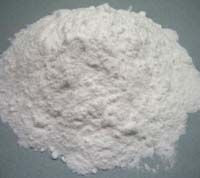Sodium Hydrogen Carbonate
Sodium Bicarbonate
Technical grade
Sodium bicarbonate or sodium hydrogen carbonate, also commonly known as bicarbonate of soda, is the chemical compound with the formula NaHCO3. Sodium bicarbonate is an odourless, white solid that is crystalline but often appears as a fine powder. It is slightly alkaline similar to that of washing soda (sodium carbonate). It is a component of the mineral natron and is found dissolved in many mineral springs. The natural mineral form is known as nahcolite. It is also produced artificially.
Sodium bicarbonate is used as a cleaner, pH adjuster for swimming pools and spas, laboratory reagent, pesticide, odour remover
PLEASE NOTE: This product is not for human or animal consumption.
Uses & Applications of Sodium Bicarbonate
In the Laboratory – Neutralization of acids and bases:
Many laboratories keep a bottle of sodium bicarbonate powder within easy reach, because sodium bicarbonate is amphoteric, reacting with acids and bases and can be used as a neutraliser. Furthermore, as it is relatively innocuous in most situations, there is no harm in using excess sodium bicarbonate. Sodium bicarbonate powder may be used to smother a small fire.
Sodium bicarbonate may be used to remove or wash acidic impurities from a crude liquid to yield a purer sample. Sodium bicarbonate reacts with the carboxyl groups to give a fast-forming and effervescent CO2 formation which has been used to test for the presence of carboxylic groups in proteins.
Water treatment – swimming pools & aquarium
Sodium bicarbonate can be added as a simple solution for raising the pH balance of water that has a high level of chlorine, such as in swimming pools and aquariums.
As a cleaning agent:
- A paste from baking soda can be very effective when used in cleaning and scrubbing.
- A solution in warm water will remove the tarnish from silver when the silver is in contact with a piece of aluminium foil.
- According to The Joy of Sex it can be used in a solution with water to remove dried semen from upholstery.
- Is more effective than vinegar, salt, or hot water alone in removing pesticides from vegetables.
Miscellaneous:
Sodium bicarbonate is used in BC Dry Chemical fire extinguishers as an alternative to the more corrosive ammonium phosphate in ABC extinguishers. The alkali nature of sodium bicarbonate makes it the only dry chemical agent, besides Purple-K, that was allowed for use on commercial deep fat fryers. The agent has a mild saponification effect on the grease, which forms a smothering soapy foam. Dry Chemicals have since fallen out of favor for kitchen fires as they have no cooling effect compared to the extremely effective wet chemical agents specifically designed for such hazards. However, it can still be used effectively on small grease fires or electrical kitchen fires per manufactures instructions.
- It can be administered to pools, spas and garden ponds to raise pH levels.
- It can be used to remove odours from books. It is a tried-and-true method of used booksellers. The sodium bicarbonate will absorb the musty smell, leaving the books less odorous.
Pesticide:
- If mixed with sugar, sodium bicarbonate acts as an effective pesticide for roaches and silverfish.
How to make homemade snow:
A fun experiment for kids and adults alike. In a bowl add 600g of sodium bicarbonate followed by an aerosol tin of shaving foam. Mix the two ingredients thoroughly until a thick snow-like consistancy is produced. Enjoy.Properties & specifications of Sodium bicarbonate
- Synonyms: Sodium bicarbonate; bicarbonate of soda; sodium hydogen carbonate;
- CAS Number: 144–55–8
- EINECS: 205–633–8
- Appearance: White crystalline solid.
- Density: 2.159 g/cm3, solid.
- Molar Mass: 84.006 g/mol
- Formula: NaHCO3
- Solubility: soluble in water 9.6 g/100 ml @ 20C
- pH: 8.3
- Melting point: 50C Decomposes
The solubility of sodium bicarbonate in water increases with temperature – 69 g/l (at 0C), 96 g/l (at 20C), 165 g/l (at 60C).
When dissolved in water the sodium ion will not adsorb to particulate matter, but remains in the aqueous phase. In water the bicarbonate ions will re-equilibrate until an equilibrium is established.
The main equilibria are:
HCO3– ? CO3 2– + H+ pKa = 10.33
CO2 + H2O ? HCO3– + H+ pKa = 6.33
The carbonate will finally be incorporated into the inorganic and organic carbon cycle.
Product Specification:
| Item Name | Index | Inspection Result |
|---|---|---|
| Sodium Bicarbonate (NaHCO3) % | >= 99.0 | 99.01 |
| Arsenic (As) % | < 0.001 | 0 |
| Heavy Metal (Pb) % | < 0.0005 | 0 |
| Loss on Drying % | < 0.2 | 0.2 |
| Ph Value (10g/L) | 8.6 approx | 8.5 |
Health & safety
This product is not classified according to the EU regulations
For full details see MSDS for sodium bicarbonate
PLEASE NOTE: This product is not for human or animal consumption.
